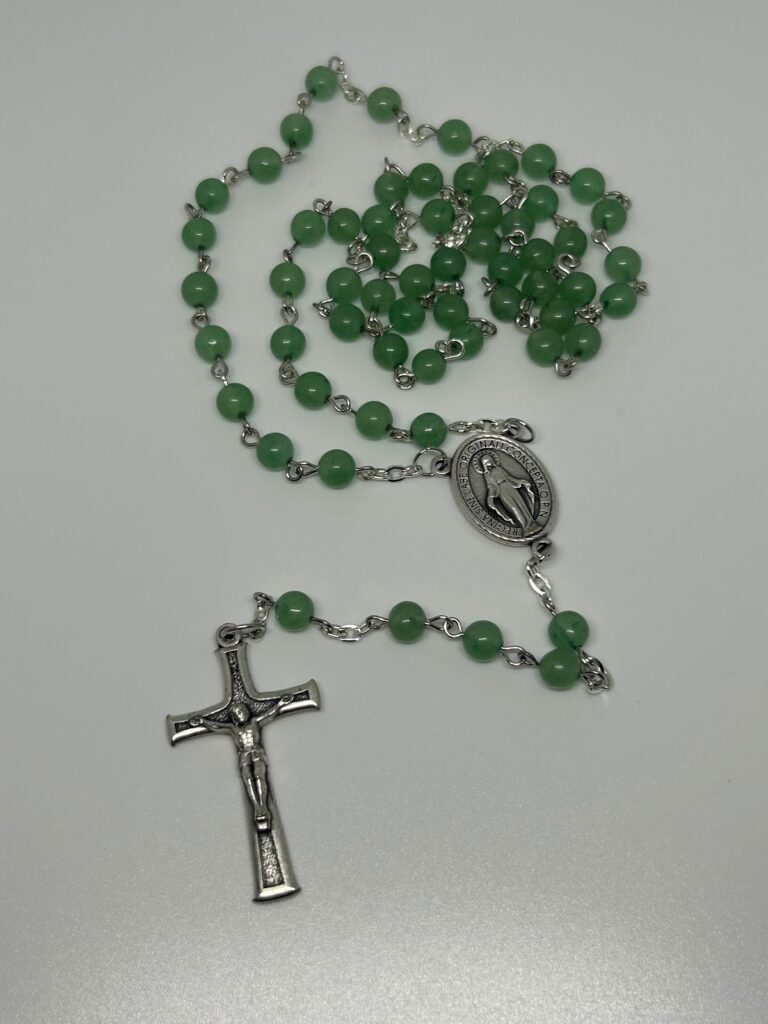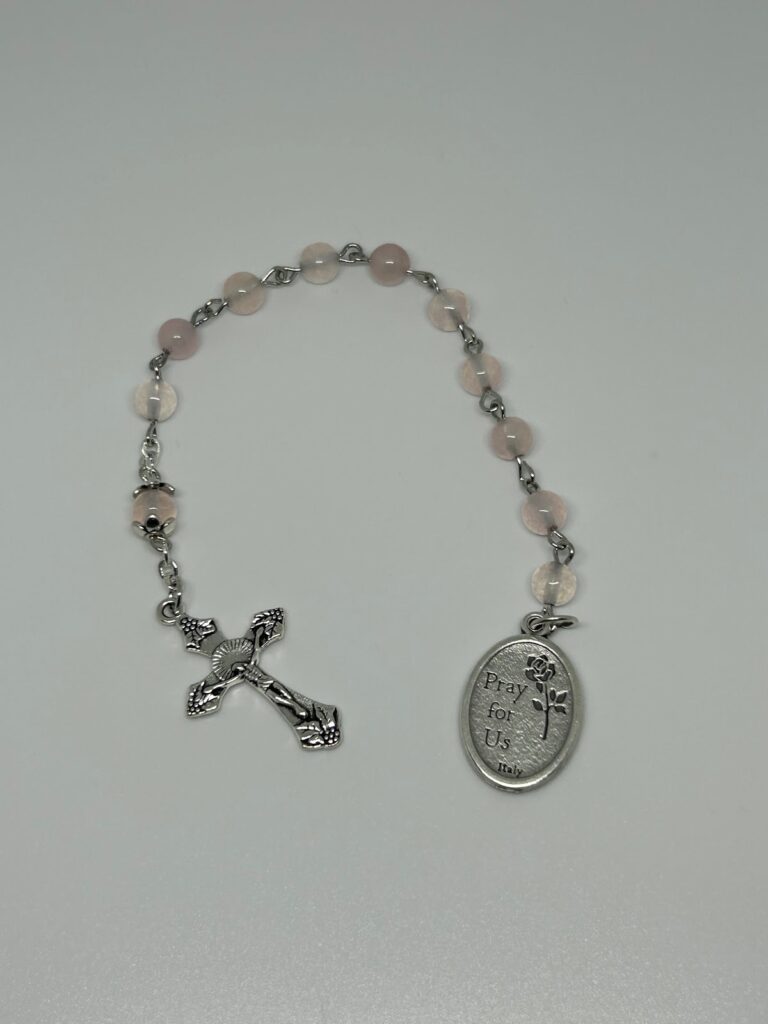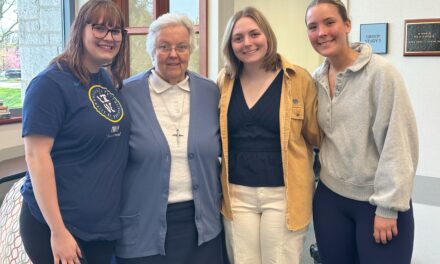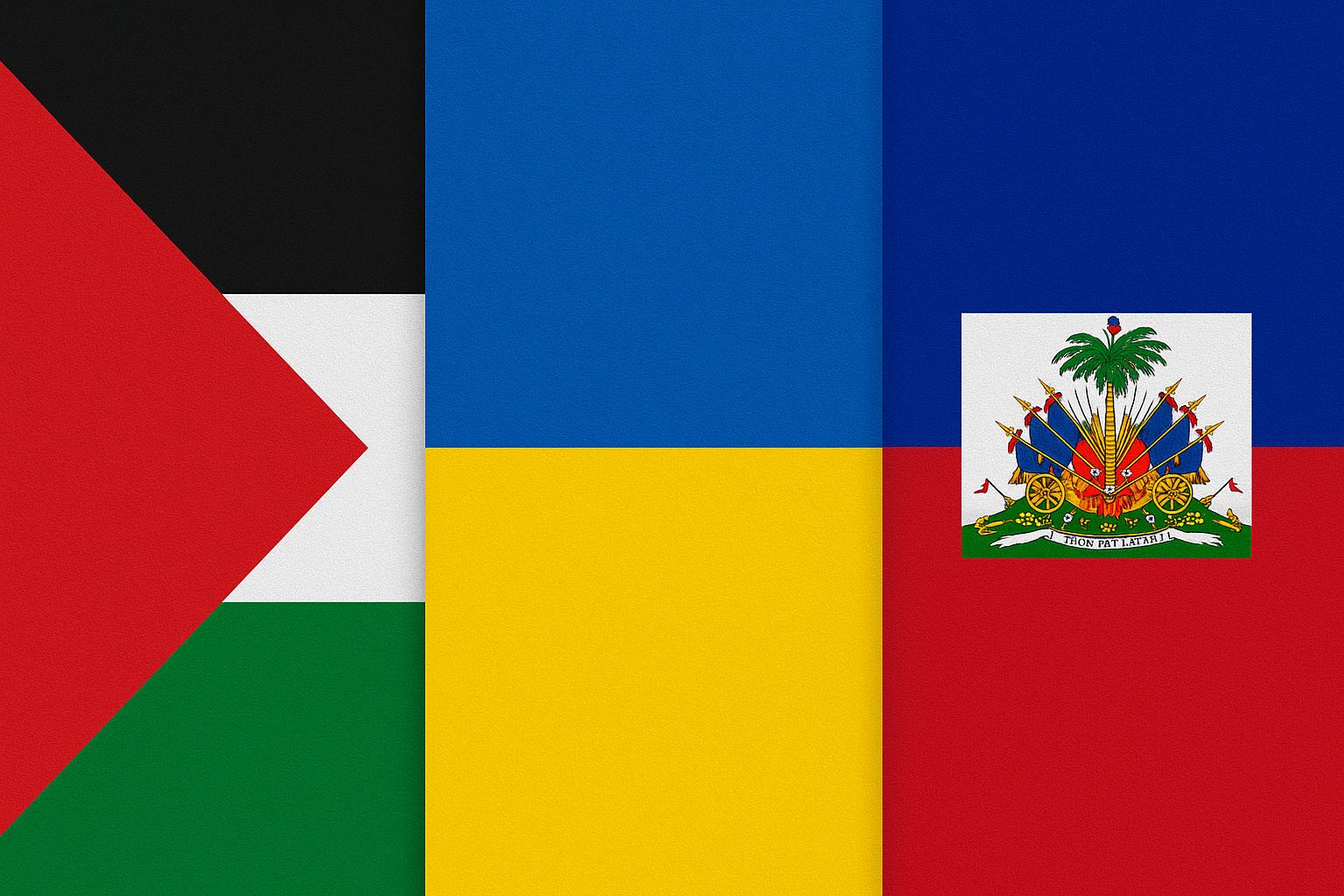By Amanda Fennell, Editor-in-Chief
Mary is all over Immaculata University’s campus. This is no wonder, considering that her immaculate heart is the namesake of the school.
While the Blessed Mother is ever-present at IU in the form of many statues and paintings speckled throughout campus, Catholics especially honor her in October, the month of the Rosary. More than a symbolic object, the Rosary is a prayer that has played a crucial role in the Catholic faith for centuries. Though reciting psalms and prayers has been a part of Catholicism for much longer, some sources credit the Rosary’s emergence to Mary’s vision to St. Dominic in the early 13th century, wherein she presented him with the Rosary. The validity of this notion is debatable, but the power of the Marian prayer is not.

The Blessed Mother holding a rosary. Original artwork by Amanda Fennell.
An early miracle linked to the Rosary occurred in 1571. When the Rosary Confraternity of Rome sought aid from Our Lady of Victory on October 7 of that year, the Christian fleet, the utter underdog of the battle, prevailed over the Turkish soldiers. As a result, St. Pius V turned that October day into the Rosary’s feast day.
Another meaningful event in the history of the Rosary happened in 1917 when the Blessed Mother charged the young seers in Fatima, Portugal with praying the Rosary daily. She also introduced the Fatima Prayer, which is an enduring part of the Rosary today.
Similarly, the Luminous Mysteries are a relatively recent addition to the Marian prayer. While the Glorious, Joyful, and Sorrowful Mysteries have existed since the 15th century, St. John Paul II announced the Luminous Mysteries in his apostolic letter, Rosarium Virginis Mariae (RVM). He published this document in October 2002, marking the start of what he deemed to be “The Year of the Rosary.”
This apostolic letter on the Rosary is a worthwhile read, as it offers insightful reflections on the prayer’s deeper meaning and power. For instance, St. John Paul II explains in RVM that the physical rosary beads not only help with counting, but they also represent the prayer’s ultimate focus on Jesus since the beads link to the Crucifix. This is an important point since a common misconception is that praying the Rosary is a form of worshipping Mary. Rather than worshipping Mary, Catholics esteem Mary and seek her guidance because of her incomparably close relationship to Jesus as His Mother and best disciple. Throughout RVM, St. John Paul II emphasizes how praying the Rosary is “[r]emembering Christ with Mary,” “[l]earning Christ from Mary,” “[b]eing conformed to Christ with Mary,” “[p]raying to Christ with Mary,” and “[p]roclaiming Christ with Mary.”
Though there are many other valuable points in RVM that radiate St. John Paul II’s affection for the Rosary, each individual has their own personal experiences with the Marian prayer, signifying that the Rosary’s richness lies beyond the words themselves and their recitation.
Even on campus, when asked “What does the Rosary mean to you?”, members of the IU community contribute a wide variety of responses. Sister Sheila Galligan, IHM, who has taught a course on Mary and written several essays on the Blessed Mother, muses:
The Rosary! I suppose John Paul II’s marvelous insight first comes to mind! He wrote that “‘the Rosary marks the rhythm of human life,’ bringing it into harmony with the ‘rhythm’ of God’s own life” (RVM). And so it does! When you watch a movie’s story unfold, there’s often music playing in the background. That’s how the Rosary connects with my life! It’s like a rhythmic musical backdrop providing God’s grace in the moments of joy and sorrow… ups and downs… zigs and zags of my day! It’s a way for me to ‘push pause’ and become more conscious of God’s presence and power.
Colin Ciavarelli ’29 particularly values the community that is built through praying the Rosary with others. He shares an opportunity for other IU students to join this community:
Here at Immaculata, my friends and I do our best to pray the Rosary as often as we can in the evening. This is the perfect way for us to not only grow in our relationship with God, but to also grow in our relationships with each other. It also provides an opportunity for each of us to unwind and relax after a long day of classes, homework, or whatever else we have going on in our lives. For anyone who may be interested, it takes place in the Villa Maria Chapel above the dining hall at 8:00 pm. Thank you, and God bless.
Natalie Hornberger ’26 pours her passion for the Rosary into the beautiful rosaries she makes for her Etsy store, SpiritGraceDesignCo.


Handmade rosaries by IU student, Natalie Hornberger. Images sourced from Natalie Hornberger.
Natalie captures the crux of the Rosary when she reflects, “To me, the Rosary is a line to heaven. It is a quick, easy, but deeply powerful prayer that keeps me anchored to Christ through Mary.”
From the free app Hallow, to rosary journals, to visual and musical versions of the Rosary on YouTube, there are more resources than ever for unraveling the riches of the Marian prayer that has pulsed through countless Catholics for centuries. This October, remember that, with each “Hail Mary,” you are loving Jesus with your Blessed Mother and growing closer to both of them through the Rosary.
Sources:
- “The History of the Rosary – Origin, Rosary Beads, St. Dominic, and More!” Dynamic Catholic, www.dynamiccatholic.com/rosary/history-of-the-rosary.html.
- “The History of the Rosary.” Catholic Education Resource Center, catholiceducation.org/en/culture/the-history-of-the-rosary.html.
- St. John Paul II. “Rosarium Virginis Mariae on the Most Holy Rosary.” Vatican, 16 Oct. 2002, www.vatican.va/content/john-paul-ii/en/apost_letters/2002/documents/hf_jp-ii_apl_20021016_rosarium-virginis-mariae.html.
- “Liturgical Year : October, Month of the Holy Rosary.” Catholic Culture, www.catholicculture.org/culture/liturgicalyear/overviews/months/10_1.cfm.
- “St. Dominic – Saints & Angels.” Catholic Online, www.catholic.org/saints/saint.php?saint_id=178.





